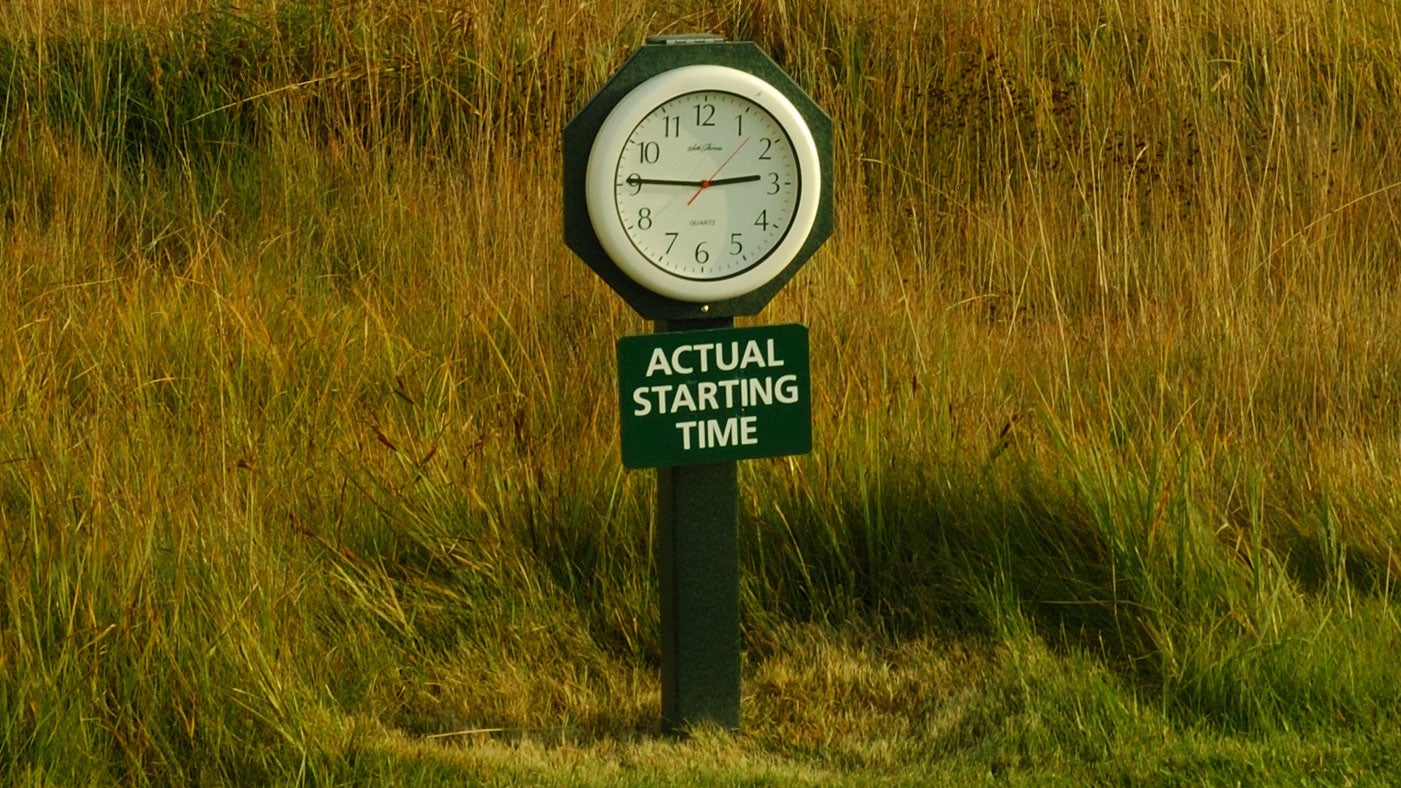Most of us ordinary duffers don’t devote a ton of thought to bunkers beyond the fact that we’d rather avoid them. But for others in the industry, the sandy hazards are often top of mind.
Architects dwell on how to best design them. Superintendents mull over how to best maintain them. Bean counters worry whether they can afford them, as bunkers cost a lot in their construction and care.
Given what they offer in both artistry and intrigue, but also considering the headaches they can cause, you could make the case that bunkers are a necessary evil. But in certain instances, you might even argue that they’re not needed at all.
This was the unconventional thought that occurred to architect Andrew Green nearly four years ago when he was brought on to oversee the renovation of the Preserve at Eisenhower Golf Course, a municipal track outside Annapolis, Maryland.
Named in honor of the 34th President of the United States, golf-mad Dwight D. Eisenhower, the course sits on a sylvan swath of land about a mile from the state capital, adjacent to Chesapeake Bay.
The first time Green walked it, in the fall of 2017, he was drawn to the subtle lilt of the terrain, with plenty of movement to hold your interest but without any severe elevation changes. The routing struck him as solid, too. Designed by Ed Ault, in the late 1960s, it was a layout with fine bones that had been through the ringer.
GOLF’s 30 best munis: The most affordable municipal golf courses for locals, rankedBy: James Colgan
“The course had lived a good life,” Green says. “It just needed to be updated.”
But what kind of update?
As he neared the 18th green on that maiden visit, Green found himself asking not what he could do for the course but what the course could do without.
Turning to Damian Cosby, chief of golf operations for Anne Arundel County, Green said, “Please, don’t shoot me. But what would you think if we took away all the bunkers?” There were 56 of them.
Cosby didn’t shoot. But he didn’t shout with enthusiasm either. Not immediately, anyway.
Bunker-less courses, though not unheard of, are not the sort of venues that exist just anywhere.
The greatest concentration of them can be found in England, the most famous being Royal Ashdown Forest Club, which sits in a forest of the same name where drastic man-made alterations are not allowed. Hence, no sandy gouges in the ground.
Courses without bunkers can be aesthetic beauties.
In designing Sheep Ranch, the bunker-less 18-holer at Bandon Dunes, Bill Coore and Ben Crenshaw were inspired by a quote from the Golden Age architect Robert Hunter, who once described a site of such lovely contours that bunkers would have only diminished it.

Coore and Crenshaw were also being pragmatic, as Sheep Ranch sits on the windiest site at Bandon. Blow-out central. A tricky spot to maintain sand.
At the Preserve at Eisenhower, Green had practical motives, too. He could save the county money, an estimated $150,000 in construction, and roughly $50,000 in annual maintenance costs. By swapping out the sand for grassy humps and hollows, Green wouldn’t be reducing the strategic interest, but given all the trouble most golfers have with bunkers, he would be improving the pace of play.
It wasn’t long before Cosby and his colleagues at the county saw the wisdom in the bunker-less proposal. Green received the green light. The renovation started in 2019. The ribbon cutting took place this past spring.

In the months since, business at the muni has been brisk. It has been at most courses during the pandemic. But ridding the grounds of bunkers has clearly been a boon. Players are getting through their rounds more quickly and, because the maintenance staff isn’t stretched thin with sand care, there’s more time to keep the rest of the place spiffy. Plus, despite a few pockets of early and inevitable resistance, the redo gets uniformly rave reviews.
No one is suggesting that bunker-less designs should be the industry standard. But might it be the right call for any number of courses?
At very least, it’s worth some thought.
This is part of our Muni Monday series, spotlighting stories from the world of city- and county-owned golf courses around the world. Got a muni story that needs telling? Send tips to Dylan Dethier or to munimondays@gmail.com and follow Muni Mondays on Instagram.










